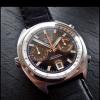-
Recently Browsing
- No registered users viewing this page.
-
Topics
-
Posts
-
I would say my percentage is the same with two pairs similar to yours- one brass one stainless. Of course I use four or five pairs for the last 5 percent 😅
-
I don’t want to frighten you but, here is a bunch of watchmakers going to work.
-
In years to come the owners will say they can't hear it because they have gone deaf. 🤣
-
Have a look here. https://www.facebook.com/TimelineWH/videos/the-fusee-chain-maker-the-worst-jobs-in-history-at-sea/1778730682206168/
-
By nickelsilver · Posted
The hour counter wheel does have a clutch, which slips whenever the chrono is stopped. In the image the blue arrow is the hour counter wheel, the green is the hammer for resetting to zero, and the orange is the brake. The hammer is pivoted on an eccentric that goes through the watch and is moved by the cam; the cam movement causes the brake to be pulled away or come in contact with the hour counter wheel. When the chrono is stopped, the brake is in contact. When you press the lever to zero, the hammer comes down and pivots the brake away while zeroing, then when the hammer comes back up the brake comes in contact with the counter again. The spring that holds the hammer back is what is actually applying pressure to the counter wheel through the brake. If that is disengaged then the counter will run- but it will run all the time. In this case it could be that the clutch wasn't lubricated and is too grippy to slip when the chono is off. The brake surface that touches the wheel is toothed, but it could still slip. On older 775X movements, the brake was smooth, and slipping was a common enough problem that they went to the toothed version.
-








Recommended Posts
Join the conversation
You can post now and register later. If you have an account, sign in now to post with your account.
Note: Your post will require moderator approval before it will be visible.